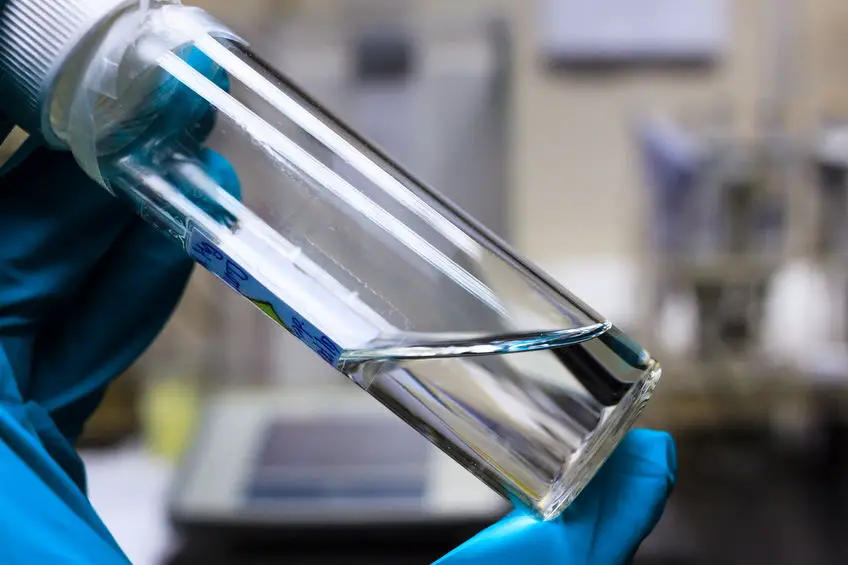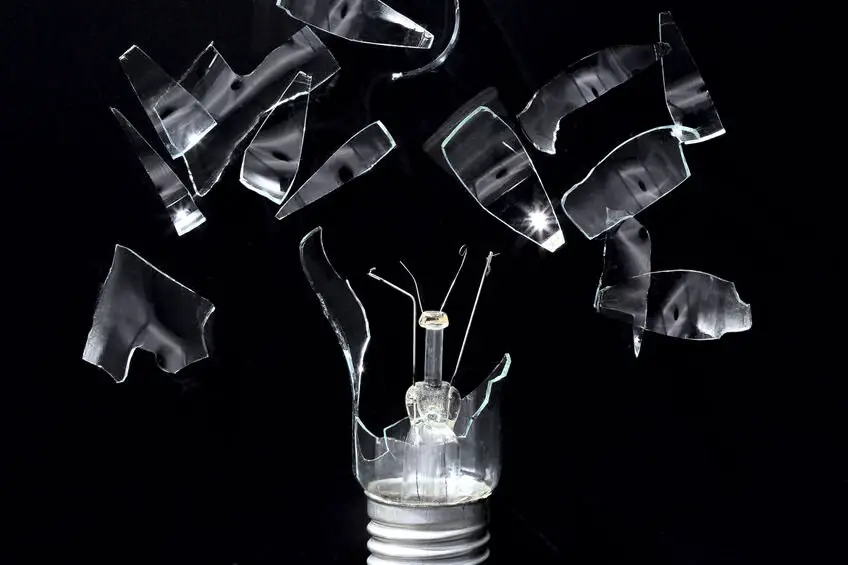What Light Bulbs Contain Mercury?
At some point, you may have heard that certain light bulbs contain traces of mercury.
The most common light bulbs that contain mercury that are still in use are mainly Compact Fluorescent bulbs (CFL), Fluorescent tubes and mercury vapour bulbs. You can also find traces of mercury in neon lighting, sodium-based bulbs and most blacklights.
In the following article, we will discuss why these bulbs contain mercury, how much of it they contain and some bulbs that contain no mercury at all.
Contents
Light Bulbs That Contain Mercury
Here are all the popular lighting options that make use of mercury as part of their construction.

Fluorescent Lights Contain 4-20mg Of Mercury
Fluorescent tubes and CFL bulbs are prime examples of lights that contain mercury. While the amount of mercury inside a fluorescent tube varies depending on its size and strength, most commonly sold fluorescent tubes have anywhere between 4-20mg of mercury.
The reason why fluorescent bulbs contain mercury is that they need it in order to create light in the first place.
The way fluorescent light is created begins with electrons exciting the mercury atoms inside the bulb, which causes the emission of UV light. This light is then converted into visible light using a substance known as “light powder” which absorbs the UV and re-emits it as visible light.
The absorption and re-emission of energy into visible light is in fact the very definition of the term “fluorescence”
In these bulbs, there is also a “helping gas”, which is there to help ignite the bulb as well as minimise energy loss by maintaining desirable air pressure inside the bulb. This gas is usually argon, but can theoretically be any noble gas.
Mercury Vapour Bulbs Contain 10-100mg Of Mercury
The bulb that most obviously contains mercury is the mercury vapour bulb. This bulb creates light in a very similar manner to how fluorescent bulbs do.
Much like fluorescent bulbs, mercury vapour bulbs work by using electrons to excite mercury in order for it to release electromagnetic energy.
The main difference between these bulbs is that mercury vapour bulbs don’t utilize any form of fluorescence in order to create visible light.
They instead manage to produce a blue light on their own by having the air pressure inside the bulb be far higher. The air pressure inside a mercury vapour bulb is around 16 kPa whereas it is only 0.8Pa in fluorescent lighting.
This being said, mercury vapour lamps contain far more mercury than fluorescent lights do. Mercury vapour lamps contain between 10-100mg of mercury.
High-Pressure Sodium Bulbs Contain 10-50mg Of Mercury
High-Pressure Sodium (HPS) bulbs are also a bulb commonly used in street lighting due to their high efficiency, and just like the bulbs mentioned above, they make use of mercury as part of their construction. The vast majority of HPS bulbs contain around 10-50mg of mercury.
This is done in a very similar manner to the other mentioned bulbs too. As electrons pass through the bulb the sodium in the bulb gets excited and starts to produce a yellow light.
The reason why mercury is used in these bulbs is that it helps with electromagnetic discharge as well as making it more balanced in terms of colour. However, there are mercury-free HPS bulbs available that use xenon as a substitute.
Neon Lighting Contains Around 250-600mg Of Mercury
Neon lights are not commonly used these days due to better alternatives existing as a result of technological development. These technological advancements meant bulbs with higher efficiency, but more importantly bulbs with less mercury content.
Neon lighting contains a lot more mercury than most other forms of lighting. Neon lighting contains anywhere between 250-600mg of mercury depending on the construction of the light.
Blacklights May Contain Some Mercury
While blacklights aren’t exactly a common bulb type it is still important to discuss since nearly all of the ones that aren’t based on LED technology contain some amount of mercury.
Most blacklights that don’t utilize LED technology make use of fluorescence instead, meaning they will contain slight traces of mercury. These bulbs are likely to contain around 2-5mg of mercury.
Why Mercury In Light Bulbs Can Be Dangerous
Now that we know which bulbs contain mercury and how much they contain, why is it that we even take this into consideration in the first place? The main reason for this is that mercury itself is a rather dangerous substance.
Mercury is toxic. Exposure to mercury can happen in a few different ways, in this instance, it’s most likely that we make skin contact with liquid mercury or breathe in toxic mercury vapours when one of these bulbs is broken.
Some of the side effects of mercury include memory loss, uncoordinated movement and muscle weakness. For a more in-depth article on the health risks of mercury, we strongly recommend you go here.
While the amount of mercury people can handle depends on a lot of factors such as the type of exposure, how long you’re exposed and the age of the person it has been estimated that for any adult a dose of 200mg mercury would be lethal with mercury poisoning symptoms starting at around 40mg of mercury intake.
Should You Be Worried About Light Bulbs Containing Mercury?
As discussed mercury has the potential to be quite dangerous to our health when exposed to it. Does this mean we should worry about the fact that it is used in a lot of common bulbs?
While mercury is dangerous it will never leech out of the bulbs unless the bulbs are broken and mercury might start spreading. At that point, they can indeed be a health risk. Luckily there are steps you can take to limit the risks of mercury poisoning regarding cleanup if that were to happen, which you can read about more in-depth here.
However, if you are thinking about buying bulbs you might want to consider lighting options that don’t contain mercury.
This can be for several reasons. If you have small kids you might want to consider the mercury-less options as a safety precaution.
Another reason could be that in addition to mercury being toxic, it is also not biodegradable. So if you’re conscious about your environmental impact there are probably other options you might want to consider.
Light Bulbs That Don’t Contain Mercury
After having discussed which bulbs contain mercury and why it is a potential health hazard that they do, we should look at some of the lighting options that don’t contain any mercury.
Incandescent Bulbs Contain 0mg Of Mercury
The incandescent bulb was the first form of the modern light bulb to be invented and was also completely free of mercury.
It achieves this due to how it creates light. Incandescent bulbs create light by heating up a tungsten filament to as high as 2500 °C (4600 °F) which causes it to glow and therefore emit light. This process requires no mercury whatsoever.
However, that is not to say that this bulb is perfect. While it doesn’t contain any toxic materials like mercury it is a highly inefficient source of light due to how much inputted energy it wastes as heat emission and not visible light.
Halogen Bulbs Contain 0mg Of Mercury
Halogen bulbs create light the same way incandescent bulbs do. They contain the same tungsten filament that gets heated up to the point where it glows and emits light, which requires 0mg of mercury.
LED Lighting Contain 0mg Of Mercury
Out of all modern lighting solutions available, LED is one of the most efficient ones out there. They are also completely mercury-free.
LEDs produce light through a process called “electroluminescence”. Electroluminescence can be defined as the process of a material producing photons (light particles) as the result of an electrical current passing through it.
This material is usually some sort of semiconductor. A semiconductor is simply a material that’s too conductive to be an insulator and too insulating to be a conductor. It falls somewhere in between those categories. The most commonly used semiconductors in LEDs are usually gallium arsenide (GaAs) or different variants of silicone.
This means that in order for LEDs to create light it requires 0mg of mercury since their method of creating light is based on an entirely different principle from mercury-based bulbs.
Comparison
After discussing how much mercury the most common types of bulbs contain we can compare how much mercury they contain and asses which bulbs pose a bigger threat than others.
| Bulb Type | Mercury Content |
|---|---|
| Incandescent | 0mg |
| Halogen | 0mg |
| LED | 0mg |
| Blacklight | 2-5mg |
| Fluorescent | 4-20mg |
| HPS | 10-50mg |
| Mercury Vapour | 10-100mg |
| Neon | 250-600mg |
This chart shows us that the vast majority of common bulbs don’t contain that much mercury. While small doses of the substance can still pose a health risk when exposed to it, it is also rather rare that you end up being exposed to mercury through your light bulbs.
Summary
To summarize, mercury is a toxic substance that should be avoided when possible. That being said, it is used in a lot of day-to-day light bulbs and does not generally pose a health risk.
If one of your bulbs were to break you simply need to be cautious about making direct skin contact with the substance and breathing in the mercury vapours, which can be avoided by using gloves and letting the room aerate before beginning the cleanup process.





